The experiment was done with freshwater prawn (Macrobrachium rosenbergi) and rice in order to analysis whether rice farming has any effect on the growth of prawn or conversely whether prawn farming has any influence on rice production. The study was carried out for a period of 112 days with two replications for each treatment. The result suggested that the yield of prawn could be increased by 18% if prawns are cultivated along with rice and would not hamper rice production significantly (p>0.05). The study was also indicated that approximately 19 % higher benefit- cost ratio could be obtained by employing this method. The total economic productivity analysis of benefit cost ratio was higher obtained from 2.87 compared to 2.42.
Most the gher farmers in Khulna, Satkhira and Bagherhat districts do not grow rice along side prawns in the rainy season. The farmers claim that prawn productions decline if they cultivate rice in the ghers. They believe that the quality of water in the ghers deteriorates after the decomposition of rice, straw and leaves and the grazing areas of the prawns also reduce due to rice cultivation. Prawns may be trapped sometimes among the rice plants (the rostrum of the prawns enter into the rice plants, immobilizing them and eventually causing death) yielding in a further fall in production. These farmers’ believe that there were however not yet tested or proven, and therefore this experiment was conducted with the intention of assessing prawn yields in relation to rice farming and vice-versa, as well as to study the economics of new technical options than the general practice (Parvezb.2006).
Freshwater Prawn culture is a common practice in southwestern part of Bangladesh. Many farmers of this region (mainly cultured in Bagherhat district of Bangladesh) are culturing this practice in gher farming system with the support of National and International Organization. The Department of Fisheries (DoF) is also providing technical support to the farmers. Moreover, DoF people sometimes visiting their fields as well as giving suggestions for better production of prawn but not advice cropping yields that is support in economically viable. But the productivity of rice cum freshwater prawn in gher farming way, the farmers are able to reach their targets in terms of production as well as financial benefit.
RESULTS
Effect of rice farming on prawn growth
Table 2. shows that the mean higher yield of prawn was obtained from treatment (C2, rice + prawn, 2.04 kg/dec compared to the control (C1, only prawn, 1.72 kg/dec). “t”-Test indicated significant differences (p<0.05) in yield between the control (C1) and the treatment (C2). The mean SGR (Specific Growth Rate) was recorded significantly higher (p<0.05) in treatment (prawn + rice, 2.31%) than control (only prawn, 2.25%). Better (lower) FCR (Food Conversion Ratio) was obtained from C2 (1.3) compared to C1 (1.8). And Table 3. shows that higher recovery rate was obtained in C2 (94%) compared with C1 (84%). Economic analysis showed that higher benefit cost ratio was obtained from C2 (2.86) compared to C1 (2.42).
Table 02. Details Prawn Stocking and Productivity of the experiment
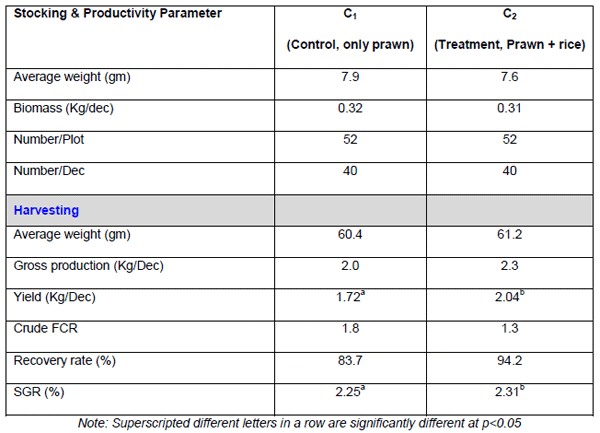
Table 3. Economics of Prawn Farming
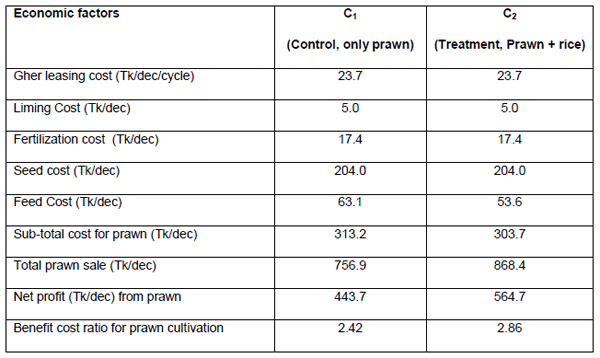
Table 4. Rice production of the experiment in details
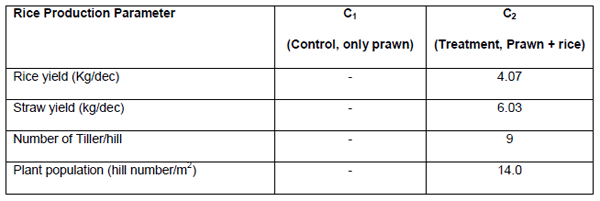
Table 5. Economic Factors of Rice Farming
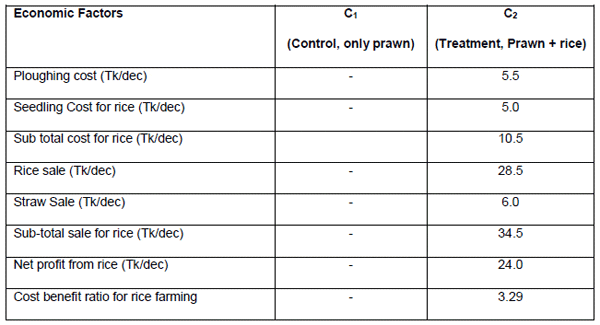
Table 6. Total productivity of the experiment in details
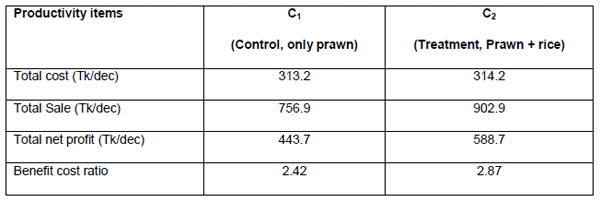
Table 6. shows that total productivity analysis of benefit cost ratio was higher obtained from C2 (2.87) compared to C1 (2.42). Table 07 shows that the mean DO was recorded a little higher in C1 followed by C3 and then C2, both in morning and afternoon. On the other hand the Table 8., The pH value of the treatments was also found to be a little higher in C1, followed by C3 and C2 (both in morning and afternoon). Temperature was recorded at about 28°C in the morning and about 30.5°C in the afternoon (Table 9). The mean ammonia content was found to range between 0.0016 mg/l to 0.0026 mg/l during the course of the experiment (Table 10).
Table 7. Oxygen as a water quality parameter of the experimental plots
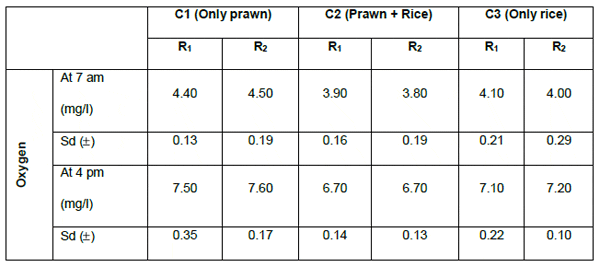
Table 8. pH as a water quality parameter of the experimental plots
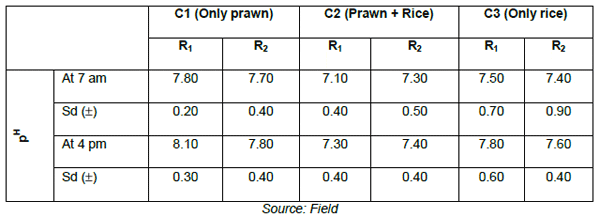
Table 9. Temperature as a water quality parameter of the experimental plots
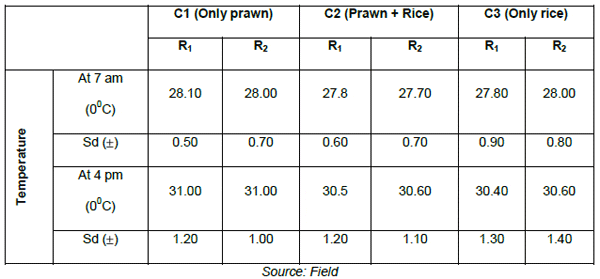
Table 10. Ammonia as a water quality parameter of the experimental plots

Effect of rice farming on prawn
Table 11. shows that results of the effect of farming prawns on rice yield. No significant difference (p>0.05) in the rice yield was found between the control (C3, only rice) and the treatment (C2, prawn + rice).
Table 11. Comparison of rice production in two different culture systems
.gif)
The mean highest yield of prawn was obtained from C2 (rice + prawn, 2.04 Kg/dec) compared to the C1 (control, only prawn, 1.72 Kg/dec). This means that prawn yields can be increased by 18.33% if the prawns are cultivated along with rice. The reason for higher yield was higher recovery rate for the control. “t”-Test indicated a significant difference (p<0.05) in the yield between C1 (control) and C2 (treatment). Nguyen et.al. (1993) noted that the gross production of Macrobrachium rosenbergii fed on fruit leaves and vegetables from one annual crop with a rice production of 8.5 ton/ha (from two crops) at 1.43 kg/dec in Vietnam where rice cultivation gained more emphasis than the prawn farming (Phuong, et.al. 2006). The means that SGR was recorded almost similar for both the C1 (control, 2.25%) and C2 (treatment, 2.31%). However, “t”-Test indicated a significant difference (p<0.05) in SGR between C1 (control) and C2 (treatment). Generally, good FCR was gained from both the treatment (C2) and control (C1). Reasons might include the utilization of natural foods by prawn, which were produced through regular fertilization. However, better (lower) FCR obtained from C2 (1.3) compared to C1 (1.8). Another reason might be the use of insects and their larvae as food by prawns in the rice field (C2). Moreover, prawns might eat periphytons that grow on rice plants. Higher recovery rate was obtained in C2 (94%) compared with C1 (84%). The reason might less cannibalistic character found in C2 as rice plants created more enable shelter for prawns during moulting. These findings conflicted with farmers’ opinion.
The economic analysis shows that higher benefit-cost ratio was obtained from C2 (2.87) compared to C1 (2.42). The results of the present investigation indicated that 18.6% higher benefit cost ratio could be obtained if the Aus rice is cultivated together with prawns.
Mean DO was recorded in C1 (4.4 mg/l to 4.5 mg/l) compared to the C2 (3.8 mg/l to 3.9 mg/l) both during the morning and afternoon. Reasons might be photosynthesis that was hampered in C2 due to shading by rice plants. Though DO was 3.8 mg/l to 3.9 mg/l by morning in C2 which not hampered prawn cultivation as Avault (1986) stated that when DO levels fell to bellow 2 p.p.m. the prawns become stressed. All water quality parameters in both treatments were within suitable range for superior prawn production (Parveza et.al. 2006, Swingle. 1961, Ali et.al.1988).
Effect of prawn farming on rice yield
The rice yield was lower in C2 (treatment, prawn + rice, 1005 kg/hec) compared C3 (control, only rice, 1115.5 kg/hec) although the difference was not significant (p>0.05). The reason might be less number of effective tillers in C2 (9 number/tiller) in comparison to C3 (9.75 number/tiller). The findings of the present investigation differ from the findings reported by Roy et.al. (1991). However the rice yield was found lower in comparison to the average national yield of Aus (Cv. Local) in Bangladesh of 1.7 t/hec (BBS 1996).
CONCLUSION
Freshwater is normally used for rearing freshwater prawns from post-larvae to marketable size. Beside the freshwater prawn, rice cropping in the same plot or field at the same time is additional income that added in national revenue. Higher yield of prawns was obtained from prawn farming within rice systems, compared to only prawn farming systems. The results of this experiment suggested that prawn yield could be increased by 18% if prawns are cultivated along with rice, and would not be obtained with this option. The study was conducted to meet understanding the new technology in regards of Economics (i.e. low) and yields of rice cum freshwater prawn (i.e. comparatively higher than control) in the gher farming system transfer aspects of culture practice that were evolved in improved culture practice.
RECOMMENDATION
These results can be readily explained to farmers with simple examples and observations. It is also recommended that the results should be shared in the farmers’ group ‘learning sessions’ and scale out through national and international organization. A range of public and private sector investments and initiatives are needed to realize the potential for growth and expanding economic output from this sector. The realization of its potential must be aided by improvements in production technology. It will be helpful to increase farmer’s profit margins, reduce the negative environmental impacts of challenging livelihood and increase job opportunities. The quantitative data presented earlier in this report show that the yields of gher farming is currently financially viable and generates considerable amounts of direct and indirect employment. Therefore research would be required as quantitative and qualitative environmental impacts for sustainable rice cum freshwater prawn farming.
August 2014



